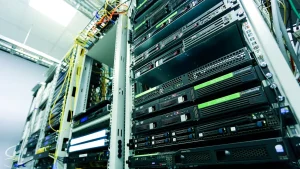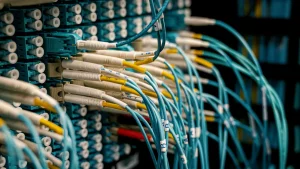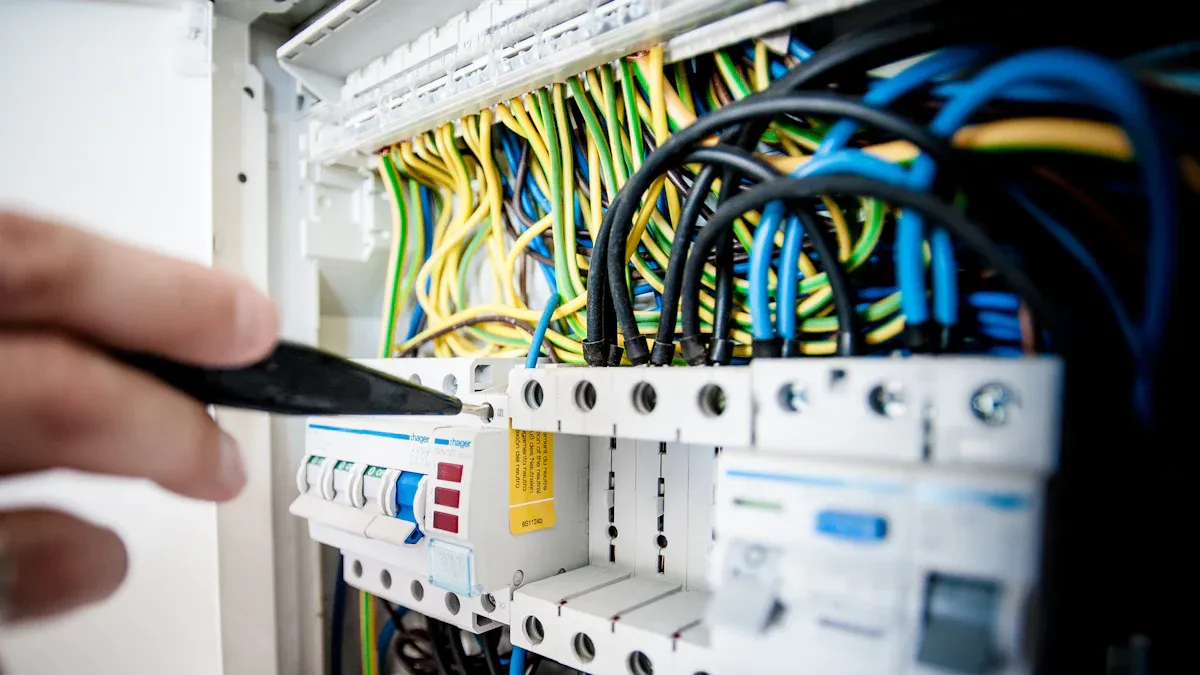
Data centers face unprecedented energy challenges as global electricity demand surges. In 2022, they consumed approximately 460 terawatt-hours (TWh), representing 2-3% of total electricity usage. This number may exceed 1,000 TWh by 2028. A smart power distribution unit helps address these demands by enhancing power management, improving reliability, and reducing costs through real-time insights and optimized energy use.
Key Takeaways
- Smart power distribution units (PDUs) help save energy. They show real-time data and help find problems to fix power use.
- Smart PDUs let you control them from far away. This means fewer trips to the site, saving time and effort.
- Buying smart PDUs cuts costs by fixing issues early. They also help the environment, making them important for today’s data centers.
Understanding Smart Power Distribution Units
What Are Smart Power Distribution Units?
A smart power distribution unit (PDU) is an advanced device designed to manage and monitor the electrical power supplied to IT equipment in data centers. Unlike traditional PDUs, smart PDUs incorporate intelligent features such as real-time monitoring, remote management, and environmental sensors. These capabilities enable data center operators to optimize energy usage, improve reliability, and reduce operational costs.
Smart PDUs are essential for modern data centers due to their ability to handle the increasing complexity of power management. They provide granular insights into power consumption at the rack, unit, or outlet level, allowing operators to make data-driven decisions. Additionally, they support sustainability initiatives by identifying inefficiencies and enabling precise load balancing.
Key Features of Smart PDUs
Smart PDUs offer a range of features that set them apart from their traditional counterparts. These features enhance their functionality and make them indispensable for efficient power management in data centers. Key features include:
- Real-Time Monitoring: Tracks power usage at the unit and outlet levels, providing detailed insights into energy consumption patterns.
- Remote Control: Allows operators to reboot or manage devices without physical intervention, reducing downtime.
- Environmental Monitoring: Includes sensors to monitor temperature and humidity, preventing equipment failures caused by adverse conditions.
- Power Usage Analytics: Offers actionable insights into energy usage, helping identify inefficiencies and optimize resource allocation.
- Scalability: Adapts to the growing needs of data centers, ensuring long-term usability.
| Feature | Description |
|---|---|
| Real-Time Monitoring | Enables precise tracking of power parameters for better management. |
| Remote Control | Allows you to reboot or manage devices without physical intervention. |
| Environmental Monitoring | Tracks temperature and humidity to prevent equipment failures. |
| Power Usage Analytics | Offers insights into energy patterns to identify inefficiencies. |
These features not only improve operational efficiency but also contribute to achieving sustainability goals by reducing energy waste.
Differences Between Smart and Traditional PDUs
Smart PDUs differ significantly from traditional PDUs in terms of functionality and performance. While traditional PDUs primarily distribute power, smart PDUs go a step further by integrating advanced monitoring and management capabilities. The table below highlights the key differences:
| Aspect | Traditional PDUs | Smart PDUs |
|---|---|---|
| Functionality | Basic power distribution | Advanced monitoring, analytics, and remote management |
| Monitoring | Limited or none | Real-time monitoring of power usage and environmental conditions |
| Management | Manual | Remote control and automated alerts |
| Scalability | Fixed capacity | Scalable to meet growing data center demands |
| Sustainability | Minimal focus | Supports energy efficiency and sustainability initiatives |
Smart PDUs also offer features like IP aggregation, which reduces deployment costs by allowing multiple units to share a single IP address. They are designed to operate in high-temperature environments, making them suitable for modern, high-density data centers. Additionally, smart PDUs include locking outlets to prevent accidental disconnections, ensuring uninterrupted operations.
Note: The global market for smart power distribution units is growing rapidly. It is projected to reach USD 3.2 billion by 2033, with a compound annual growth rate (CAGR) of 8.5% from 2023 to 2030. This growth underscores the increasing adoption of smart PDUs in data centers worldwide.
How Smart Power Distribution Units Work
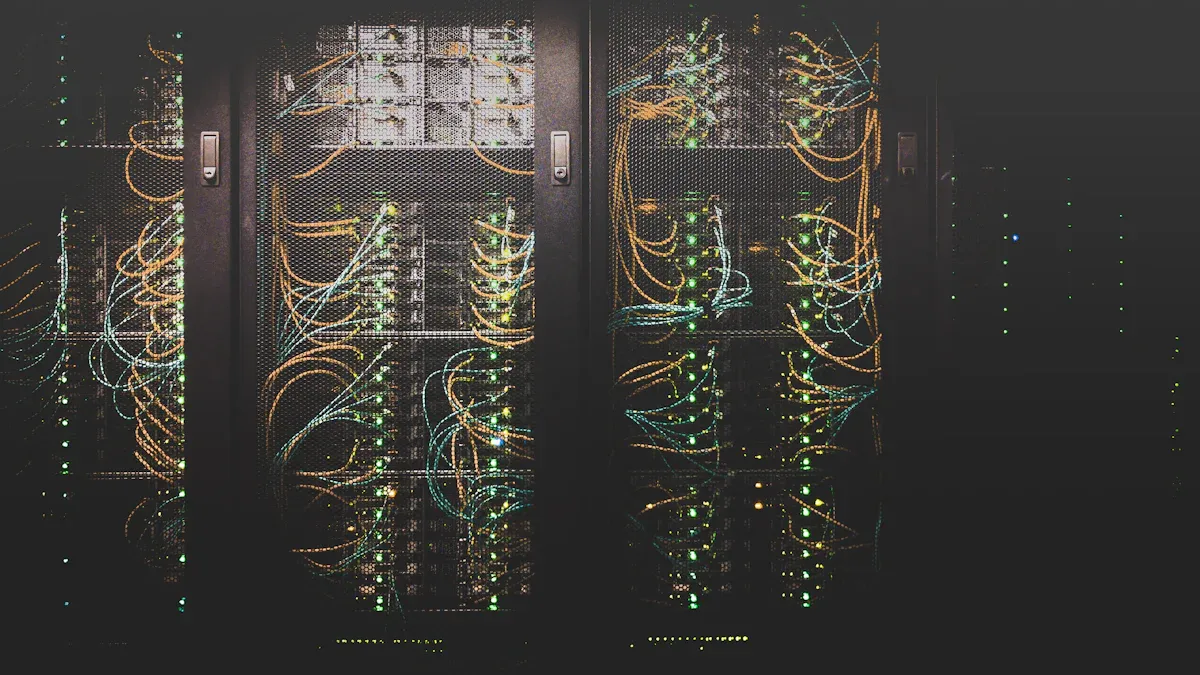
Real-Time Monitoring and Analytics
A smart power distribution unit enables real-time monitoring of critical metrics such as power consumption, voltage, and environmental conditions. This capability allows data center operators to identify inefficiencies and potential issues before they escalate. For instance, intelligent PDUs continuously track power usage and provide advanced reporting, helping operators optimize energy efficiency and reduce downtime.
Key features of real-time monitoring include:
- Tracking power consumption, temperature, and humidity.
- Advanced reporting for data-driven decision-making.
- Capacity planning to optimize resource utilization.
A case study titled Striking a Balance Through Growth, Energy and Decarbonization highlights the importance of digital transformation in energy management. Predictive maintenance strategies, enabled by real-time analytics, can reduce maintenance costs by up to 40%, showcasing the financial benefits of this technology.
Remote Management Capabilities
Remote management is a cornerstone feature of smart PDUs, offering operators the ability to control and monitor power distribution from anywhere. This functionality reduces the need for on-site interventions, saving time and resources. Advanced technologies like IoT and AI enhance these capabilities, enabling centralized monitoring and user-defined alerts for quick fault detection.
Several products exemplify these features:
- Liebert MPX: Offers hot-swappable modules and remote monitoring.
- Sentry Power Units: Provides IP-enabled access and remote rebooting.
- Power Watch: Includes programmable current meters and alarm features.
These tools improve operational efficiency and security by allowing real-time telemetry and remote access to critical data.
Power Quality Analysis and Load Balancing
Smart PDUs play a vital role in maintaining power quality and ensuring balanced loads across data center equipment. They analyze voltage, frequency, and current to detect anomalies that could disrupt operations. Load balancing prevents overloading and ensures optimal performance of IT infrastructure.
The following table illustrates the performance metrics of different PDU types:
| Type of PDU | Features | Performance Metrics |
|---|---|---|
| Metered PDU | Local load monitoring, no network connection | Real-time load data, no historical data collection |
| Monitored PDU | Remote monitoring of power parameters | Historical data, trend analysis, alarm notifications |
| Switched PDU | Remote outlet control, full monitoring | Enhanced power management, reduced human error |
By leveraging these capabilities, data centers can achieve greater reliability and energy efficiency, ensuring uninterrupted operations.
Benefits of Smart Power Distribution Units
Enhanced Energy Efficiency
Smart power distribution units significantly improve energy efficiency by providing precise and actionable insights into power consumption. Their ability to monitor energy usage in real time enables data center operators to identify inefficiencies and optimize energy allocation. For example, accurate kWh measurements allow operators to track energy usage patterns and pinpoint areas for improvement. Branch power metrics further enhance visibility by offering detailed insights into power consumption at the branch level.
| Measurement Type | Description | Benefits |
|---|---|---|
| Accurate kWh measurements | Provides precise and real-time kWh consumption data. | Enables tracking of energy usage and identification of optimization areas. |
| Branch power metrics | Offers visibility into power consumption at the branch level. | Allows monitoring of specific areas or devices, enhancing resource allocation efficiency. |
| Remote monitoring | Facilitates access and control over power management tasks. | Reduces physical intervention needs and simplifies management processes. |
Additionally, smart meter data plays a pivotal role in enhancing operational efficiency. By enabling load profiling and identifying network topologies, these units support demand-side management strategies and improve circuit protection. This level of control ensures that energy is used efficiently, reducing waste and contributing to sustainability goals.
Improved Reliability and Uptime
Reliability is a cornerstone of data center operations, and smart power distribution units excel in this area. Power issues account for 43% of data center outages, making effective power management essential for maintaining uptime. Smart PDUs mitigate these risks by continuously monitoring power quality and providing early warnings of potential issues. Their ability to detect anomalies in voltage, frequency, and current ensures that operators can address problems before they escalate.
The increasing reliance on cloud services and data-driven decision-making underscores the need for robust power distribution solutions. Smart PDUs meet this demand by offering advanced features such as remote management and automated alerts. These capabilities not only enhance reliability but also reduce the likelihood of human error, further improving uptime.
Optimized Resource Management
Large-scale data centers benefit immensely from the resource optimization capabilities of smart power distribution units. These devices integrate advanced technologies such as IoT, deep learning, and adaptive resource allocation to enhance operational efficiency. Real-time data analytics improve grid stability and efficiency by processing information immediately, while adaptive learning models dynamically allocate resources, boosting efficiency by 19%.
| Evidence Component | Description |
|---|---|
| Integration of Technologies | Combines deep learning, IoT, and adaptive resource allocation for optimization. |
| Real-time Data Analytics | Enhances grid efficiency and stability through immediate data processing. |
| Adaptive Learning Models | Utilizes reinforcement learning for dynamic resource allocation, improving efficiency by 19%. |
| System Architecture | Comprises Communication Unit, Decision-Making Unit, and Device Unit for autonomous decision-making. |
| Performance Improvement | DNN model increases energy consumption projections by 27-30%, indicating better energy pattern representation. |
| Grid Stability | MAS design enhances localized control and resilience, boosting stability by 12-15%. |
This level of optimization ensures that data centers operate at peak performance, even as their scale and complexity grow. By leveraging these advanced features, operators can achieve better resource utilization and maintain high levels of efficiency.
Cost Savings and ROI
The financial benefits of adopting smart power distribution units are substantial. By improving energy efficiency and reducing downtime, these units deliver significant cost savings. Predictive maintenance, enabled by real-time analytics, can lower maintenance costs by up to 40%. Additionally, the ability to remotely manage power distribution reduces the need for on-site interventions, saving both time and resources.
The return on investment (ROI) for smart PDUs is further enhanced by their scalability. As data centers expand, these units can adapt to meet growing demands without requiring significant additional investment. This scalability ensures long-term usability and maximizes the value of the initial investment.
Tip: Investing in a smart power distribution unit not only reduces operational costs but also supports sustainability initiatives, making it a win-win solution for modern data centers.
The Future of Smart Power Distribution Units in Data Centers
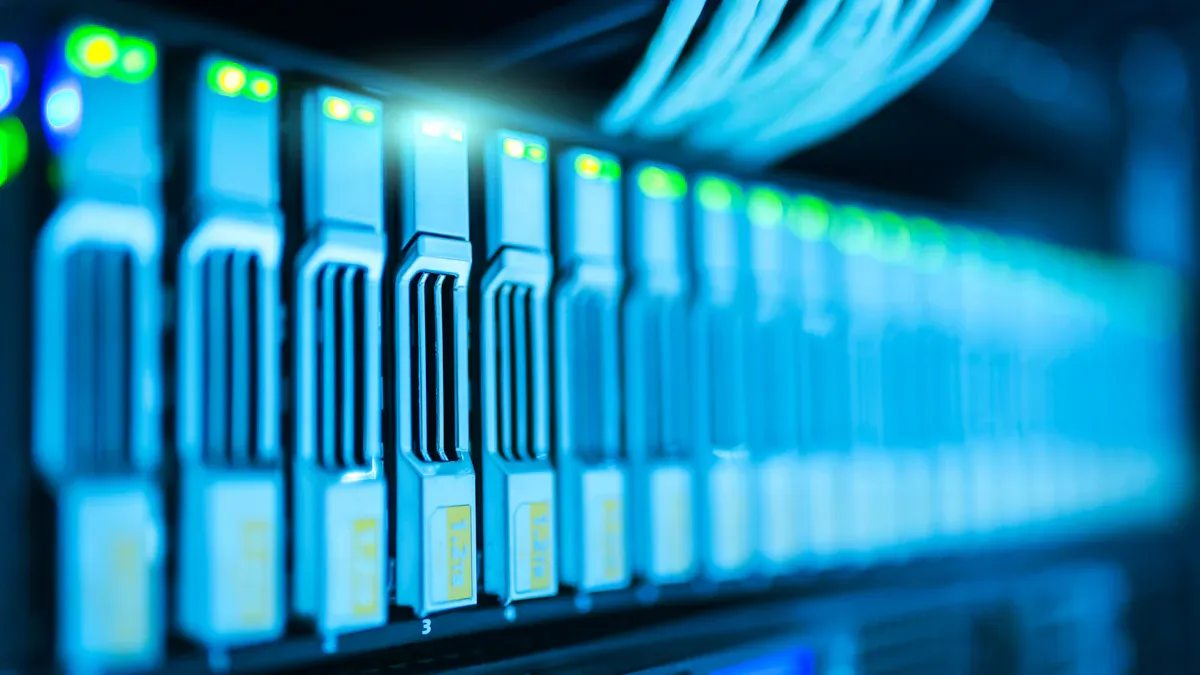
Trends in Data Center Technology
The evolution of data center technology continues to shape the role of smart power distribution units. As facilities adopt high-performance computing and artificial intelligence, the demand for high-density PDUs has surged. These units provide the scalability and efficiency required to support advanced workloads. Additionally, the rise of edge computing and IoT devices has increased the need for efficient power distribution systems that can handle decentralized operations.
Market forecasts highlight significant growth in the PDU sector. The global market size is projected to expand from $7.40 billion in 2025 to $12.89 billion by 2034, with a compound annual growth rate (CAGR) of 6.36%. This growth reflects the increasing emphasis on energy efficiency and the integration of monitoring capabilities into PDUs. Reports such as 2022 Trends to Watch: Data Center Physical Infrastructure emphasize the importance of these advancements in shaping future data center designs.
Meeting Sustainability Goals
Sustainability remains a top priority for data centers worldwide. Smart power distribution units play a critical role in achieving these goals by reducing energy waste and improving efficiency. Their real-time monitoring capabilities allow operators to identify inefficiencies and optimize power usage. Innovations in IoT and AI further enhance these units, enabling predictive analytics that supports energy-saving strategies.
The focus on sustainability aligns with broader industry trends. For example, the integration of intelligent PDUs is driven by the expansion of cloud infrastructure and the deployment of edge computing. These technologies demand efficient power management solutions that minimize environmental impact while maintaining operational reliability.
Supporting Scalability and Growth
Scalability is essential for data centers to meet growing power demands. Smart power distribution units address this need through modular designs that allow for flexible capacity adjustments. Operators can customize configurations to match specific workload requirements, reducing over-provisioning and ensuring efficient resource utilization.
The modular nature of these units also simplifies upgrades and expansions. This flexibility aligns with the industry’s shift toward standardized designs, ensuring compatibility with future technologies. Reports from Strategic Market Research highlight how streamlined deployment and management reduce operational costs while enhancing reliability. As data centers continue to grow, smart PDUs will remain a cornerstone of scalable and efficient power distribution.
Smart power distribution units are indispensable for data centers striving to remain competitive in 2025. Their modular architectures enable incremental scaling, ensuring adaptability to fluctuating demands. Predictive maintenance reduces downtime and extends asset lifecycles, while sustainability alignment mitigates risks in regulated environments.
| Insight/Metric | Description |
|---|---|
| Modular Architectures | Enables incremental scaling as demand fluctuates, enhancing adaptability. |
| Predictive Maintenance | Reduces unplanned downtime and extends asset lifecycles through real-time monitoring. |
| Sustainability Alignment | Incorporates recycled materials and renewable integration, mitigating risks in a regulated landscape. |
Adopting these units addresses industry challenges effectively:
- High energy consumption necessitates efficient power distribution systems.
- Compliance with strict regulations on carbon emissions remains critical.
- AI-driven automation optimizes power management and predictive maintenance.
Data center operators should prioritize smart power distribution units to future-proof their facilities and meet increasing energy demands.
FAQ
What is the lifespan of a smart power distribution unit?
Smart PDUs typically last 10-15 years, depending on usage and maintenance. Regular inspections and firmware updates extend their operational lifespan.
Can smart PDUs integrate with existing data center infrastructure?
Yes, smart PDUs are designed for seamless integration. Their modular architecture and compatibility with standard protocols ensure smooth deployment in existing setups.
Are smart PDUs suitable for small-scale data centers?
Absolutely! Smart PDUs offer scalability and cost-effective solutions, making them ideal for small-scale data centers aiming to optimize power management and improve efficiency.
Tip: Choose PDUs with remote monitoring features to reduce operational overhead in smaller facilities.
